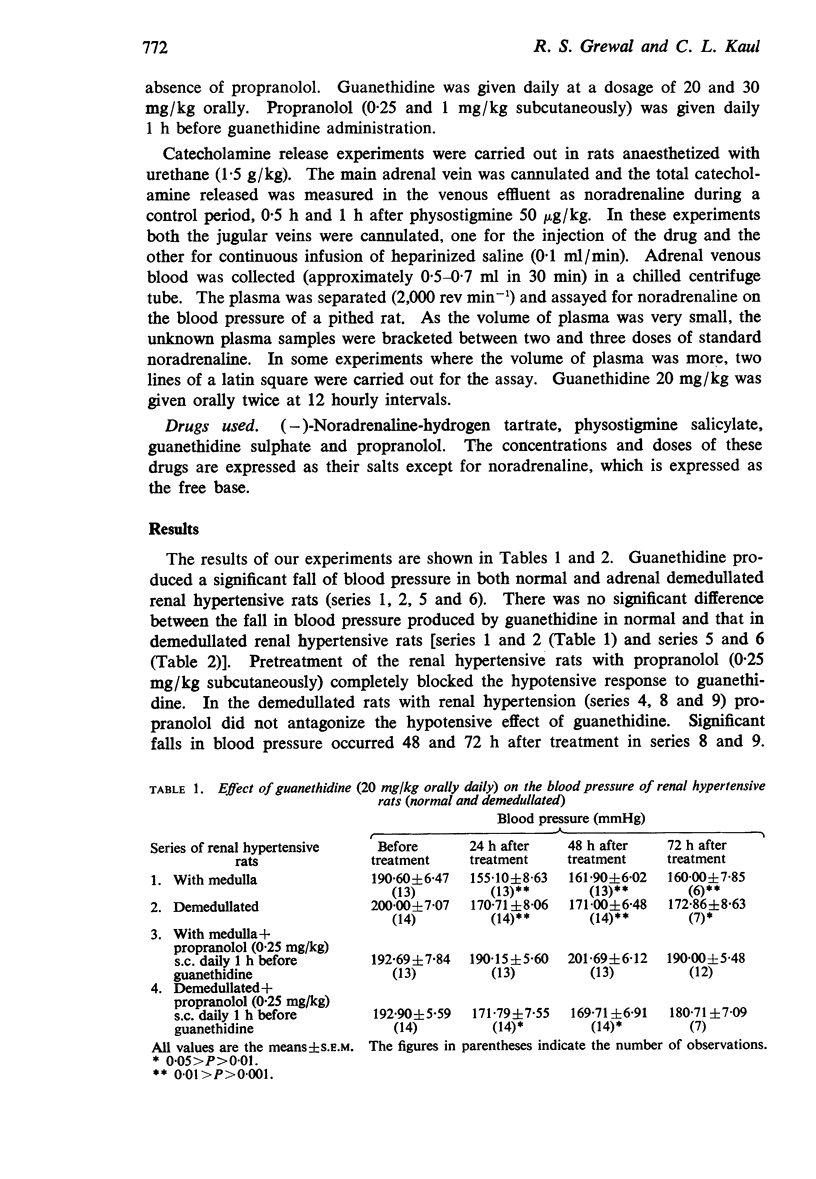Abstract
1. Propranolol antagonizes the hypotensive effect of guanethidine in renal hypertensive but not in adrenal demedullated renal hypertensive rats.
2. Guanethidine does not interfere with the release of catecholamines from the adrenal gland which follows splanchnic nerve stimulation in cats anaesthetized with pentobarbitone.
3. Guanethidine does not release or interfere with the release of catecholamines after the intravenous injection of physostigmine in the rat.
4. Propranolol antagonizes the antihypertensive effect of guanethidine by potentiating the vasopressor effects of catecholamines released from the adrenal glands during the induction stage of ether anaesthesia.
Full text
PDF




Selected References
These references are in PubMed. This may not be the complete list of references from this article.
- ABBOUD F. M., ECKSTEIN J. W. Vasodilator action of guanethidine. Circ Res. 1962 Nov;11:788–796. doi: 10.1161/01.res.11.5.788. [DOI] [PubMed] [Google Scholar]
- ATHOS W. J., McHUGH B. P., FINEBERG S. E., HILTON J. G. The effects of guanethidine on the adrenal medulla. J Pharmacol Exp Ther. 1962 Aug;137:229–234. [PubMed] [Google Scholar]
- BUTTERFIELD J. L., RICHARDSON J. A. Acute effects of guanethidine on myocardial contractility and catecholamine levels. Proc Soc Exp Biol Med. 1961 Feb;106:259–262. doi: 10.3181/00379727-106-26303. [DOI] [PubMed] [Google Scholar]
- Brunner H., Hedwall P. R., Meier M. Influence of an adrenergic beta-receptor blocking agent on the effect of various hypotensive agents in the hypertensive rat. Experientia. 1965 Apr 15;21(4):231–232. doi: 10.1007/BF02141906. [DOI] [PubMed] [Google Scholar]
- CASS R., KUNTZMAN R., BRODIE B. B. Norepinephrine depletion as a possible mechanism of action of guanethidine (SU 5864), a new hypotensive agent. Proc Soc Exp Biol Med. 1960 Apr;103:871–872. doi: 10.3181/00379727-103-25702. [DOI] [PubMed] [Google Scholar]
- Grewal R. S., Kaul C. L. Adrenaline reversal by CIBA 1002-Go. Eur J Pharmacol. 1969 Jan;5(2):153–160. doi: 10.1016/0014-2999(69)90023-5. [DOI] [PubMed] [Google Scholar]
- Kaul C. L., Grewal R. S. Effect of physostigmine upon the output of catecholamines from the adrenal gland of the rat. J Pharm Sci. 1968 Oct;57(10):1741–1744. doi: 10.1002/jps.2600571024. [DOI] [PubMed] [Google Scholar]
- MAXWELL R. A., MULL R. P., PLUMMER A. J. [2-Octahydro-1-azocinyl)-ethyl]-guanidine sulfate (CIBA 5864-SU), a new synthetic antithypertensive agents]. Experientia. 1959 Jul 15;15:267–267. doi: 10.1007/BF02158076. [DOI] [PubMed] [Google Scholar]
- Prichard B. N., Gillam P. M. Treatment of hypertension with propranolol. Br Med J. 1969 Jan 4;1(5635):7–16. doi: 10.1136/bmj.1.5635.7. [DOI] [PMC free article] [PubMed] [Google Scholar]


